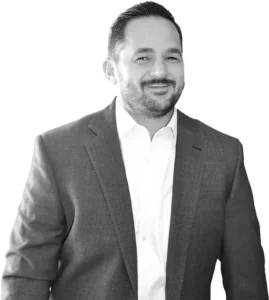Bullseye!
In 2004, the Olympic games were held in Athens – a return to the birthplace of the original games, an homage to ancient Greece. It was these very games in Athens where we saw Mr. Michael Phelps take home his first Olympic gold – the first of 23 – winning the 400-meter individual medley. Yet, today I don’t want to discuss Phelps, but rather another athlete by the name of Matthew Emmons.
Emmons was 23 years old when competing in these Olympic games as a marksman. If you were watching these events live, you would’ve seen that Emmons was the favorite to win the gold medal in the men’s 50-meter rifle three positions event. This American prodigy was all set to take home top honors. By the time he approached the final target, his lead was so commanding that even a halfway decent shot would secure gold. Like every other shot, Matthew Emmons went through his routine processes – synchronized breaths, steady trigger finger, calibrating to his target, etc. – and then he fired his rifle. What happened next would make Olympic history and potentially haunt Emmons forever.
Matthew Emmons’s last shot was a bullseye… on the wrong target. This mistake would not only slide Emmons out of medal contention but take him all the way from 1st place to 8th.
When I heard this story, I couldn’t help but connect the dots back to personal finance. Investors dedicate themselves to the management of their assets, much like an athlete prepares for their sport. These efforts are reflected by the time, money, and emotional attention that is given over to money management. Yet, I can’t tell you how often I ask myself, “What exactly are they aiming at?”
So… What Exactly Do You Do?
As a new potential client is vetting out our group as a possible suitor, I’ll often be asked to describe what exactly an advisor does. Honestly, my wife asks me this same question every so often too. When answering, I typically bifurcate our offering/service into two categories – investment management and financial planning. Investment management is typically the easier to understand of the two – we manage folk’s investment assets on a discretionary basis as a fiduciary. The other side of the coin, financial planning, is sort of a catch-all word for all the advice we provide, whether this planning/advice/guidance is around retirement, insurance, taxes, or any other financial matter.
Now, here is a key truth that often gets overlooked – the investment portfolio is created and managed, with the sole purpose of fueling or fulfilling the financial plan. Regardless of how much more interesting and captivating investment management is, in the food chain of personal finance, it is subordinate to the financial plan.
And here is where people begin aiming at the wrong target. Investors begin to place expectations on their portfolio regardless of how these expectations hurt or help their financial plan. An obsession is birthed around current environments, appealing opportunities, and the endless pursuit of the “perfect” investment.
Let me be very clear here, if you lead with investment management without placing it in the context of a financial plan, you are falling victim to the classic financial misstep of “ready, fire, aim.” As I often say, each security and each investment within a portfolio should be viewed as one single puzzle piece. Once you start to build out that puzzle (or mosaic), it should be very clear how the portfolio – and each puzzle piece – supports the objectives of the financial plan.
Thermostats & Thermometers
Quite a few times recently, I’ve been asked to review an investment portfolio and provide feedback/advice. My response is always the same, “Tell me a bit more about your financial plan…” or perhaps a simpler translation, “What are your goals?” or “What are you trying to achieve?” or “What are you aiming at?” I can’t opine on your investments if I don’t know what ultimate purpose they are serving.
But, again, the more interesting topic for most investors is the investments, not the plan.
Unpacking the difference between a thermostat and a thermometer is a helpful analogy for me. At first glance, you might not recognize the difference between these two but let me explain just how significant the difference is. A thermometer will tell you the temperature – this tool is fully dependent on the current environment it finds itself in. A thermostat, on the other hand, is a tool we use to set the temperature and to change the environment that surrounds it. Too many investors take a thermometer approach, and they allow their investment portfolio to continually be adjusted based on the mood and temperature of the current economic environment. What investors need is a financial plan that will act as the thermostat, setting the temperature and the design of the portfolio. A thermostat-based financial plan can be adjusted as life circumstances change, but it is not a victim of the economic cycles and emotions that drive most thermometer portfolios.
Just this last week, I was asked to review a handful of recommendations from another advisor. Of the four recommendations made, all four were adjustments within the portfolio that were all based on this advisor’s perception of the current environment. Not one note, suggestion, comment, or recommendation was threaded back to the financial plan. Let me be candid, this is bad advice.
I was asked recently by a client if we should adjust their risk tolerance based on how 2022 is playing out. Again, to me, this is that thermometer approach, as I don’t believe the long-term planning that was once created should be constantly recalibrated based on the current economic temperature. The financial plan should’ve been created with seasons in mind – much like a home is built to withstand the heat of summer and the cool of winter, a financial plan should be equipped to shelter an investor in all economic seasons.
A Broken Record
If you are a regular reader of TOM, I give you full permission to accuse me of being a broken record. I am indeed often giving the same or similar advice in different forms or presentations. Financial columnist for the Wall Street Journal, Jason Zweig, once described the difficulty of personal finance writing was to figure out how to refeed your audience the short list of financial truisms in a new and exciting way.
Personal finance and investing doesn’t need to be as complex as we often make it, but simple also just isn’t that exciting for some. I will give you the answer to the test – the financial plan is the absolute centerpiece to success. One should be thoughtful in the creation, monitoring, and adjustments to that financial plan. Believe me, there are plenty of distractions to take your eyes off the prize, but a well-crafted plan will bear much fruit over time.
Your Greatest Edge
When it comes to investing, we are always looking for an edge. When we come to realize that we aren’t going to be the smartest guy or gal on Wall Street and that we all have access to the same information, we might start to feel ill-equipped. We may feel left wondering what our edge is.
Your greatest potential strength as an investor will be your temperament and your time horizon. Buffett often highlights that it is temperament more than IQ that marks the sign of a great investor. Often, we just have to “out-patience” our peers to reveal our edge.
The financial plan should provide fertile ground for just that – clarity regarding time horizons and setting investor expectations to avoid surprises that would potentially lead to bad investor behavior. Your financial plan should clearly spell out how your portfolio should behave – both good and bad. This
should include return targets and explain the dispersion or variations that will generate these average returns.
IKEA
I will leave you with this last final thought.
Have you ever purchased something from IKEA? The running joke is how time-consuming the assembly process can be. It is a difficult endeavor; successful investing is a difficult endeavor too.
Now, how amplified is that difficulty if I was to strip away the IKEA assembly directions? It would feel nearly impossible. This is your financial plan; it is your portfolio assembly guide. It is simply foolish to try to construct or review a portfolio without your financial plan guiding the discussion.
Just like our friend Matthew Emmons, you may diligently prepare and fire off the perfect shot, but if you are hitting a bullseye on the wrong target, it will bring you absolutely no benefit.
As always, my inbox is open – comments, questions, corrections, and complaints are all welcome ().
And, of course, I will be back next week with more of my… Thoughts On Money.







